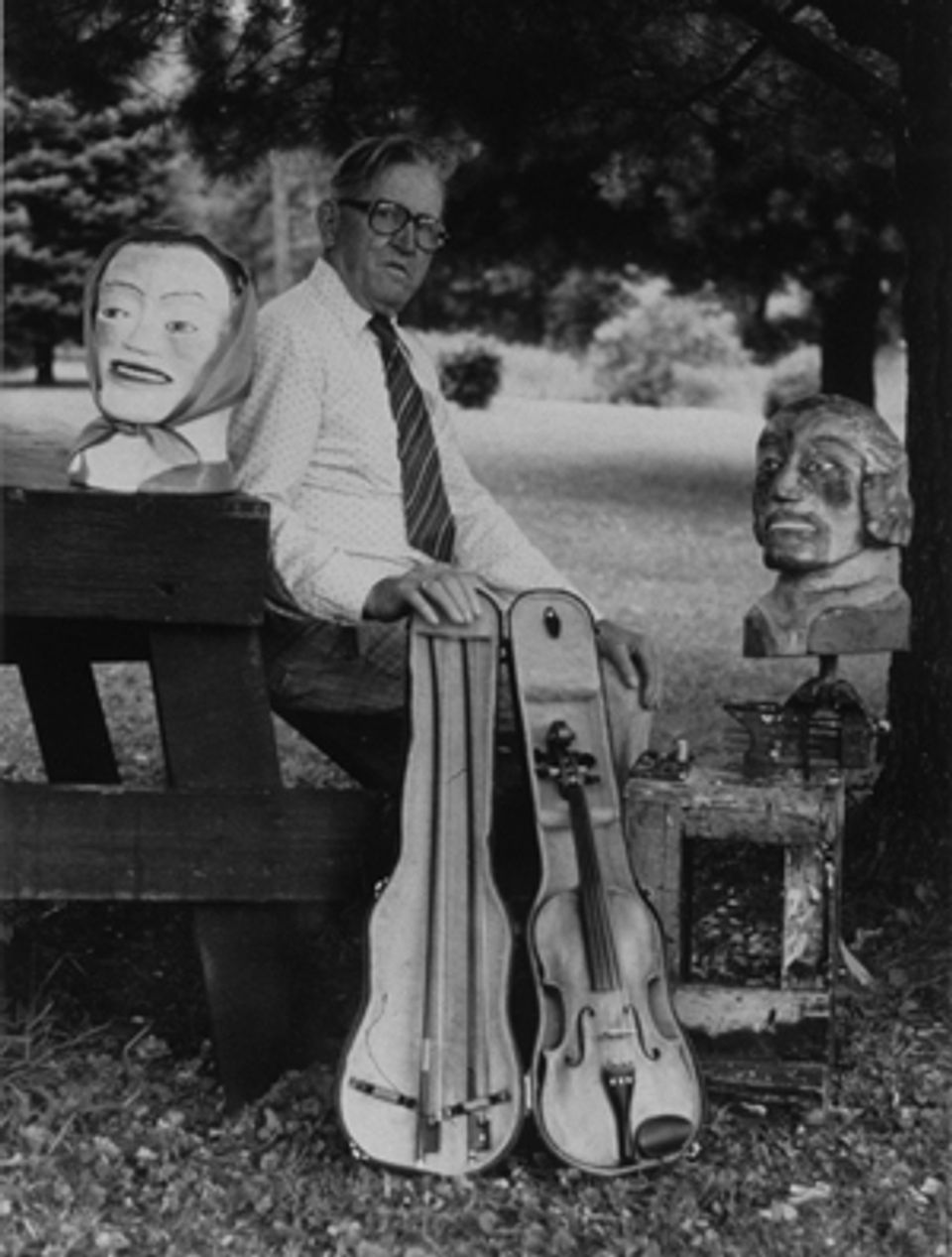Shields Landon (“S.L.”) Jones

- Also known as
- S. L. Jones
- Born
- Indian Mills, Franklin County, West Virginia, United States
- Died
- Hinton, West Virginia, United States
- Biography
"A person has to have some work to do, so I carve some and play the fiddle." That's been S. L. Jones's philosophy since 1967 when he turned to his youthful hobby of whittling after his first wife's death and his retirement from forty-five years with the Chesapeake and Ohio Railroad. Using his Bowie knife, Jones first carved miniature figures and animals from the local yellow poplar, walnut, and maple he gathered in the woods. Wood chisels proved more practical when he began to carve life-size busts of people and heads of animals from hardwood logs. Table-top freestanding figures, singly or in groups, began to appear in the mid 1970s. A similar evolution marks his surfaces—from unpainted early carvings in the late 1960s to the introduction of paint, stain, and penciling around 1972. By the mid 1970s, Jones used opaque paint to embellish his sculptures.
Lynda Roscoe Hartigan Made with Passion: The Hemphill Folk Art Collection in the National Museum of American Art (Washington, D.C. and London: National Museum of American Art with the Smithsonian Institution Press, 1990)
- Luce Artist Biography
As a boy, Shields Landon “S. L.” Jones carved animals and figures from tree branches while out hunting in the woods of West Virginia. He worked for the Chesapeake and Ohio Railroad for more than forty years and after retiring devoted all of his time to carving. His first wife, Hazel Boyer, died in 1967, and Jones found that carving and playing the fiddle helped to ease his loneliness. He built a small, one-room shed for his workshop and music studio, and people gathered there in the evenings to tell stories and sing songs. Jones viewed his carvings as people and believed that if he carved a figure of a man, he should make “a wonderful woman for that man. When you get them together, that will be something.” (S. L. Jones, “A Person Has to Have Some Work To Do,” Goldenseal, Spring 1982)













